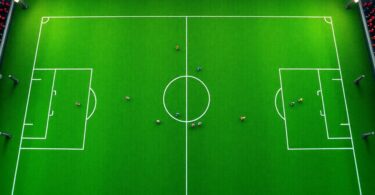If you’re a proud pool owner, understanding how your swimming pool plumbing diagram works is essential. It’s not just about enjoying a refreshing dip; it’s also about knowing how to keep your pool in top shape. This guide will break down the key components of pool plumbing, how they function together, and what you need to do to maintain them. So, let’s dive in and explore the ins and outs of your pool’s plumbing system!
Key Takeaways
- The swimming pool plumbing diagram shows how water flows through your pool system.
- Each component, like skimmers and pumps, plays a vital role in keeping your pool clean.
- Regular maintenance helps prevent issues in your pool plumbing system.
- Understanding the circulation process can help you troubleshoot problems.
- Upgrading your plumbing can improve efficiency and reduce long-term costs.
Understanding The Swimming Pool Plumbing Diagram
Key Elements Of The Diagram
Okay, so you’re staring at a swimming pool plumbing diagram and feeling a bit lost? Don’t stress, it happens to the best of us. The diagram is basically a roadmap of how water flows through your pool system. It shows you where everything is connected and how it all works together. Think of it like a treasure map, but instead of gold, you’re finding clean, sparkling water. The key elements you’ll usually see are:
- Skimmers and main drains: These are the entry points for water.
- The pump: The heart of the system, pushing water around.
- The philtre: Cleans the water.
- Return jets: Where the clean water comes back into the pool.
Importance Of Each Component
Each part of your pool’s plumbing has a job to do, and if one part isn’t working right, the whole system suffers. The skimmer sucks up leaves and debris from the surface, while the main drain gets the stuff that settles at the bottom. The pump keeps the water moving, preventing stagnation. The philtre removes all the tiny particles that make the water cloudy. And the return jets? They push the clean water back into the pool, making sure it’s evenly distributed. Without these components working together, your pool would quickly turn into a swamp. Understanding the pool pump functionality is key to maintaining a healthy pool.
How To Read The Diagram
Reading a pool plumbing diagram isn’t as hard as it looks. Usually, there are lines showing the pipes, and symbols representing each component. The arrows show the direction of water flow. Start at the skimmer and main drain, follow the lines to the pump, then to the philtre, and finally to the return jets. It’s like following a recipe – each step is important. If you see something labelled ‘heater’ or ‘chlorinator’, that’s an optional extra in the system. If you’re still unsure, there are plenty of resources online, or you could ask a pool professional to walk you through it.
Understanding your pool’s plumbing diagram can save you a lot of headaches (and money) in the long run. By knowing how everything is connected, you can quickly identify problems and make sure your pool stays in top condition. It’s a bit like knowing the layout of your house – it just makes life easier.
Essential Components Of Pool Plumbing
Skimmers And Main Drains
Skimmers and main drains are your pool’s first line of defence against debris. Skimmers, located near the water’s surface, suck in leaves and floating gunk, while main drains at the pool’s bottom help circulate water and remove settled debris. Think of them as the pool’s vacuum cleaners, working together to keep the water clear. Without them, you’d be swimming in a soup of leaves and who-knows-what-else. Regular cleaning of the skimmer baskets is a must to keep things flowing smoothly. It’s a simple task that makes a big difference.
Pool Pump Functionality
The pool pump is the heart of your entire pool system. It’s what keeps the water moving, ensuring that it passes through the philtre and gets properly treated. Without a functioning pump, your pool would quickly become a stagnant pond. Choosing the right size pump is important; too small, and it won’t circulate the water effectively; too big, and you’ll waste energy and potentially damage other components. It’s a bit like Goldilocks and the Three Bears – you need to find the one that’s just right. A pool pump that’s well-maintained will keep your pool sparkling for years to come.
Filtration Systems Explained
Filtration systems are what actually clean the water, removing dirt, algae, and other impurities. There are three main types of philtres:
- Sand Philtres: These are the most common and easiest to maintain. Water is forced through a bed of sand, which traps the debris.
- Cartridge Philtres: These use a pleated cartridge to philtre out particles. They’re more effective than sand philtres at removing smaller particles but require more frequent cleaning.
- Diatomaceous Earth (DE) Philtres: These are the most effective at removing tiny particles, resulting in crystal-clear water. However, they require the most maintenance and use DE powder, which needs careful handling.
Choosing the right philtre depends on your pool size, usage, and budget. Regular backwashing or cleaning of the philtre is essential to maintain its effectiveness. A clean philtre means a clean pool, and that’s what we all want, right?
How Water Circulates In A Pool

The Suction Phase
Okay, so picture this: your pool’s water is constantly moving, and it all starts with suction. The pool pump acts like the heart of the whole system, pulling water in through two main entry points: the skimmers and the main drain. Skimmers are those little openings at the side of your pool that grab leaves and debris off the surface before they sink. The main drain, down at the bottom, sucks up anything that makes it past the skimmers. This initial suction is super important because it’s the first step in getting all that dirty water cleaned up.
Filtration And Treatment Phase
Once the water’s been sucked in, it’s off to the filtration system. This is where the magic happens. The water gets pushed through a philtre – usually sand, diatomaceous earth (DE), or a cartridge philtre – to remove all the fine particles and gunk. After filtration, the water might go through a heater to get it to the right temperature, and then it’s sanitised, usually with chlorine or a salt system, to kill off any bacteria or algae. This whole process ensures the water is clean, clear, and safe to swim in.
Return Phase
Finally, the clean, treated water heads back into the pool through the return jets. These jets aren’t just there to look pretty; they play a vital role in circulating the water evenly throughout the pool. They’re usually positioned to push the water in a circular motion, which helps distribute chemicals and heat properly. Think of it like this:
- Clean water is pushed back into the pool.
- The jets create a circular flow.
- This ensures even distribution of chemicals and heat.
Proper circulation is key to maintaining a healthy and enjoyable swimming environment. Without it, you’d end up with stagnant spots, uneven chemical levels, and a whole lot of unhappy swimmers. So, make sure those return jets are doing their job!
Common Issues In Pool Plumbing

Pool plumbing, like any system, can run into a few snags. Knowing what to look for can save you a heap of trouble and a few dollars down the line. Let’s have a squiz at some common problems.
Identifying Air Leaks
Air leaks are a common pain in the neck. They usually show up as bubbles coming out of your return jets or a loss of pressure at the pump. Here’s a quick checklist to help you spot them:
- Check the pump lid for cracks or a dodgy seal.
- Inspect all the fittings and connections around the pump and philtre.
- Have a look at the skimmer to make sure the water level is high enough – if it’s too low, the pump can suck in air.
Air leaks can cause your pump to work harder, which can shorten its lifespan. Plus, they can mess with your pool’s chemical balance. Best to sort them out pronto!
Dealing With Clogs
Clogs are another frequent offender. Leaves, twigs, and other bits and bobs can build up in your pipes, slowing down the water flow. Here’s how to tackle them:
- Regularly clean out your skimmer baskets and pump strainer basket. This is your first line of defence.
- If you suspect a clog further down the line, try using a plumbing snake to dislodge it.
- For stubborn clogs, you might need to call in a professional for hydro-jetting.
Understanding Pressure Problems
Pressure problems can be a bit tricky to diagnose, but they often point to underlying issues. Here’s a table to help you understand what different pressure readings might mean:
| Pressure Reading | Possible Cause | Solution |
|---|---|---|
| High | Clogged philtre, blocked pipes | Clean philtre, clear pipes |
| Low | Air leak, pump issue, low water | Check for leaks, inspect pump, top up water |
Keep an eye on your pressure gauge. Significant changes can indicate a problem brewing. Regular pool plumbing inspections can help catch these issues early. If you’re not sure what you’re looking at, it’s always best to get a professional opinion. Ignoring pressure problems can lead to bigger, more expensive headaches down the track.
Maintenance Tips For Pool Plumbing
Regular Inspections
Alright, so you’ve got a pool. Awesome! But like any bit of kit, it needs looking after. Regular inspections are key to keeping your pool plumbing in tip-top shape. I usually set a reminder on my phone to do a quick once-over every month, and a more thorough check every quarter. It’s all about catching those little problems before they turn into big, expensive headaches.
Here’s what I usually look for:
- Any signs of leaks around the pump, philtre, and pipes.
- Cracks or damage to any of the plumbing components.
- Debris build-up in the skimmer basket and pump strainer.
- Unusual noises coming from the pump.
Cleaning Skimmers And Philtres
Seriously, don’t skip this step. A blocked skimmer or philtre will put extra strain on your pump and can seriously mess with your water quality. I try to clean my skimmer basket at least once a week, especially after a windy day. The philtre gets a backwash every month or so, depending on how much use the pool is getting. If you’ve got a sand philtre, keep an eye on the pressure gauge – that’s your cue to backwash. For cartridge philtres, a good rinse with the hose usually does the trick. Remember to check your pool pump functionality regularly to ensure optimal performance.
Winterizing Your Pool Plumbing
If you live somewhere that gets properly cold, winterizing your pool plumbing is non-negotiable. Freezing water expands, and that can crack pipes and damage equipment. Trust me, you don’t want to deal with that in spring.
Here’s my winterizing routine:
- Drain the pool water to below the skimmer level.
- Blow out the plumbing lines with an air compressor.
- Add pool antifreeze to the pipes to prevent freezing.
- Remove drain plugs from the pump, philtre, and heater.
- Cover the pool to protect it from the elements.
Look, I know pool maintenance can seem like a pain, but it’s way better than dealing with a major plumbing disaster. A little bit of regular care will save you time, money, and stress in the long run. Plus, you’ll get to enjoy your pool more, which is what it’s all about, right? Don’t forget to use quality materials when setting up pool plumbing to avoid future issues.
Troubleshooting Pool Plumbing Problems
Diagnosing Leaks
Finding a leak in your pool plumbing can feel like searching for a needle in a haystack, but with a bit of detective work, you can usually track it down. The most obvious sign is a drop in the pool’s water level that isn’t due to evaporation. Start by checking the obvious spots: around the pump, philtre, heater, and any visible pipes. Look for damp patches, drips, or mineral deposits. Don’t forget to check the skimmer, as leaks often occur where the plastic skimmer meets the concrete pool. A simple dye test can also help pinpoint the source. Turn off the pump, add some dye near the suspected leak, and watch where it gets sucked in.
Fixing Broken Pipes
Okay, so you’ve found a broken pipe. Now what? First things first, turn off the pump and isolate the section of pipe you need to repair. For small cracks, you might get away with using epoxy putty or a PVC solvent weld. But for larger breaks, you’ll likely need to cut out the damaged section and replace it with a new piece of PVC pipe. Make sure you use a PVC primer and cement specifically designed for pool plumbing to ensure a watertight seal. Let the cement cure completely before turning the pump back on. Here’s a quick checklist:
- Turn off the pump.
- Cut out the damaged section.
- Apply primer and cement to the new pipe and fittings.
- Allow to cure before turning the pump back on.
Addressing Pump Issues
Pump problems can manifest in a few different ways: the pump might be making strange noises, not priming properly, or not pumping enough water. Start by checking the pump basket for debris and making sure the impeller isn’t clogged. Air leaks in the suction line can also cause the pump to lose prime. Inspect all the fittings and O-rings for cracks or damage, and replace them as needed. If the pump motor is overheating, it could be a sign of a more serious problem, like a faulty capacitor or winding. In that case, it’s best to call in a professional. Remember to regularly inspect your pool to catch these issues early.
Dealing with pool plumbing issues can be frustrating, but with a systematic approach, you can often diagnose and fix the problem yourself. However, don’t hesitate to call a qualified pool technician if you’re unsure or if the problem is beyond your skill level. It’s better to be safe than sorry when it comes to pool plumbing.
Upgrading Your Pool Plumbing System
When To Consider Upgrades
Alright, so when’s the right time to think about giving your pool plumbing a bit of a facelift? Well, if you’re constantly battling leaks, noticing a drop in performance, or your equipment is just plain old, it might be time. Think of it like this: if your pool’s plumbing is costing you more in repairs and energy bills than it’s worth, an upgrade is a smart move. Also, if you’re planning any major pool renovations, it’s a good opportunity to upgrade the plumbing at the same time. It’s easier to do it all at once rather than piecemeal.
Benefits Of Modern Equipment
Modern pool equipment can seriously improve your pool experience. We’re talking about things like variable-speed pumps, which use way less energy than older models. Newer philtres are more efficient at keeping your water sparkling clean, and automated systems can take a load off your mind by managing chemical levels and scheduling cleaning cycles. Plus, modern equipment is often more durable and reliable, meaning fewer headaches down the road. Consider easy upgrades to your pool system.
Choosing The Right Components
Choosing the right components for your pool plumbing upgrade can feel a bit overwhelming, but it doesn’t have to be. First, think about your specific needs and budget. Do you want to save money on energy bills? Are you looking for easier maintenance? Once you know what you want, do some research and compare different products. Talk to a pool professional – they can offer advice based on your pool’s size, usage, and local climate. Don’t skimp on quality; it’s better to invest in reliable equipment that will last. Here are some things to consider:
- Pipes: PVC is common, but CPVC handles heat better. Match the new pipes to your existing ones for compatibility.
- Pumps: Variable-speed pumps save energy. Look for models with good reviews and warranties.
- Philtres: Cartridge, sand, and DE philtres each have pros and cons. Choose one that suits your pool’s needs and your maintenance preferences.
Upgrading your pool plumbing isn’t just about replacing old parts; it’s about making your pool more efficient, easier to maintain, and more enjoyable to use. By carefully considering your options and investing in quality equipment, you can create a pool that’s a pleasure to own for years to come.
Wrapping It Up
So there you have it! Understanding your swimming pool plumbing isn’t just for the pros. With a bit of knowledge, you can keep your pool running smoothly and enjoy those hot days without a hitch. Remember, each part of the plumbing system plays its role, from skimmers to pumps. If something goes wrong, you’ll have a better idea of what to check first. Regular maintenance is key, so don’t skip it! Dive into those tasks, and your pool will thank you with crystal-clear water all summer long. Happy swimming!
Frequently Asked Questions
What is the main purpose of pool plumbing?
The main job of pool plumbing is to move water around the pool. It helps keep the water clean and safe by filtering out dirt and germs.
What are skimmers and why are they important?
Skimmers are openings at the water’s surface that catch leaves and debris. They are important because they help keep the pool clean by sending dirty water to the philtre.
How does water circulate in a pool?
Water circulates in a pool by being sucked in through skimmers and drains, then pushed through the pump and philtre before returning to the pool through jets.
What should I do if I see air bubbles in the return jets?
Air bubbles can mean there is a leak in the plumbing. Check for loose connections or damaged parts and fix them to stop the air from getting in.
How often should I clean my pool’s philtre?
You should clean your pool’s philtre regularly, usually every few weeks, to keep the water clean and the system running well.
What steps should I take to winterize my pool plumbing?
To winterize your pool plumbing, drain the water from the pipes, add antifreeze to prevent freezing, and cover the pool to protect it from the cold.








